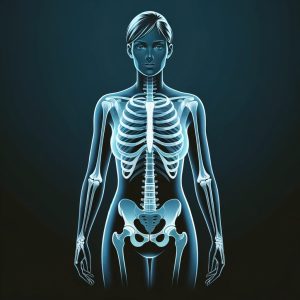The Silent Culprit: How Osteoporosis Sneaks Up and What You Can Do
Osteoporosis is a stealthy condition that significantly impacts bone health, often going unnoticed until a serious fracture occurs. This comprehensive guide delves into the silent nature of osteoporosis, its prevention, and the importance of early detection, offering valuable insights and actionable tips.

Unveiling Osteoporosis: The Hidden Bone Crisis
The Essence of Osteoporosis
Osteoporosis is a condition where bones lose density and strength, becoming fragile and more susceptible to fractures. This decrease in bone mass and deterioration of bone tissue leads to an increased risk of fractures, which are the primary concern of this disease.
The Silent Progression
What makes osteoporosis particularly dangerous is its asymptomatic nature. There are no early warning signs, and often the condition is only discovered after a fracture occurs. This lack of symptoms can lead to a delay in diagnosis and treatment, increasing the risk of severe bone damage.
Who is at Risk? Demystifying the Myths
Age and Gender: Key Factors
- Postmenopausal Women: They are at a higher risk due to the decrease in estrogen, a hormone that helps maintain bone density.
- Older Adults: As people age, bone regeneration slows down, leading to a natural decrease in bone density.
Lifestyle and Genetic Factors
- Family History: A strong family history of osteoporosis or fractures increases risk.
- Nutrition and Lifestyle Choices: Poor diet lacking calcium and vitamin D, sedentary lifestyle, excessive alcohol consumption, and smoking are significant risk factors.
Medical Conditions and Medications
Certain chronic diseases and medications can exacerbate bone loss, such as rheumatoid arthritis, chronic kidney disease, and long-term use of corticosteroids.
Preventative Measures: Fortifying Your Bones
Dietary Strategies for Bone Health
- Calcium-Rich Diet: Incorporate dairy products, leafy greens, nuts, and calcium-fortified foods.
- Vitamin D Intake: Ensure adequate vitamin D through sunlight exposure, supplements, and vitamin D-rich foods like fatty fish and egg yolks.
Physical Activity: A Pillar of Bone Strength
- Weight-Bearing Exercises: Activities like walking, running, and dancing help in maintaining bone density.
- Strength Training: Lifting weights and resistance exercises are crucial for bone health.
Lifestyle Modifications
- Quit Smoking: Smoking accelerates bone loss.
- Moderate Alcohol Consumption: Excessive alcohol can interfere with the body’s ability to absorb calcium.
Early Detection: Turning the Tide Against Osteoporosis
Diagnostic Tools
- Bone Density Scans (DEXA): A critical tool for measuring bone density, helping in early detection and monitoring of osteoporosis.
- FRAX Score: A tool that estimates the risk of fractures in the next 10 years based on individual risk factors.
Regular Health Screenings
Regular check-ups and discussions about bone health with a healthcare provider are vital, especially for those with risk factors.
Navigating Life with Osteoporosis: Management and Adaptation
Medications: Aiding Bone Health
- Bisphosphonates: Commonly prescribed drugs that slow bone loss.
- Hormone-Related Therapy: For postmenopausal women, hormone replacement therapy can be considered.
Safety Measures to Prevent Fractures
- Fall Prevention: Making home modifications to reduce fall risk, such as installing grab bars and ensuring good lighting.
- Bone-Healthy Lifestyle: Continuation of dietary and exercise recommendations.
The Power of Community and Knowledge
Building a Supportive Network
- Support Groups: Connecting with others facing similar challenges can provide emotional support and practical advice.
The Role of Education and Awareness
- Community Education: Raising awareness about osteoporosis, its risks, and prevention methods is crucial in fostering a supportive environment.
Conclusion: A Call to Action Against Osteoporosis
Osteoporosis may be a silent disease, but it is not an undefeatable one. By understanding the risks, taking proactive prevention measures, and seeking early detection, we can mitigate its impact. It’s crucial to maintain a dialogue about bone health, especially for those at higher risk. Remember, the journey to stronger bones is a continuous one, involving both individual efforts and community support.